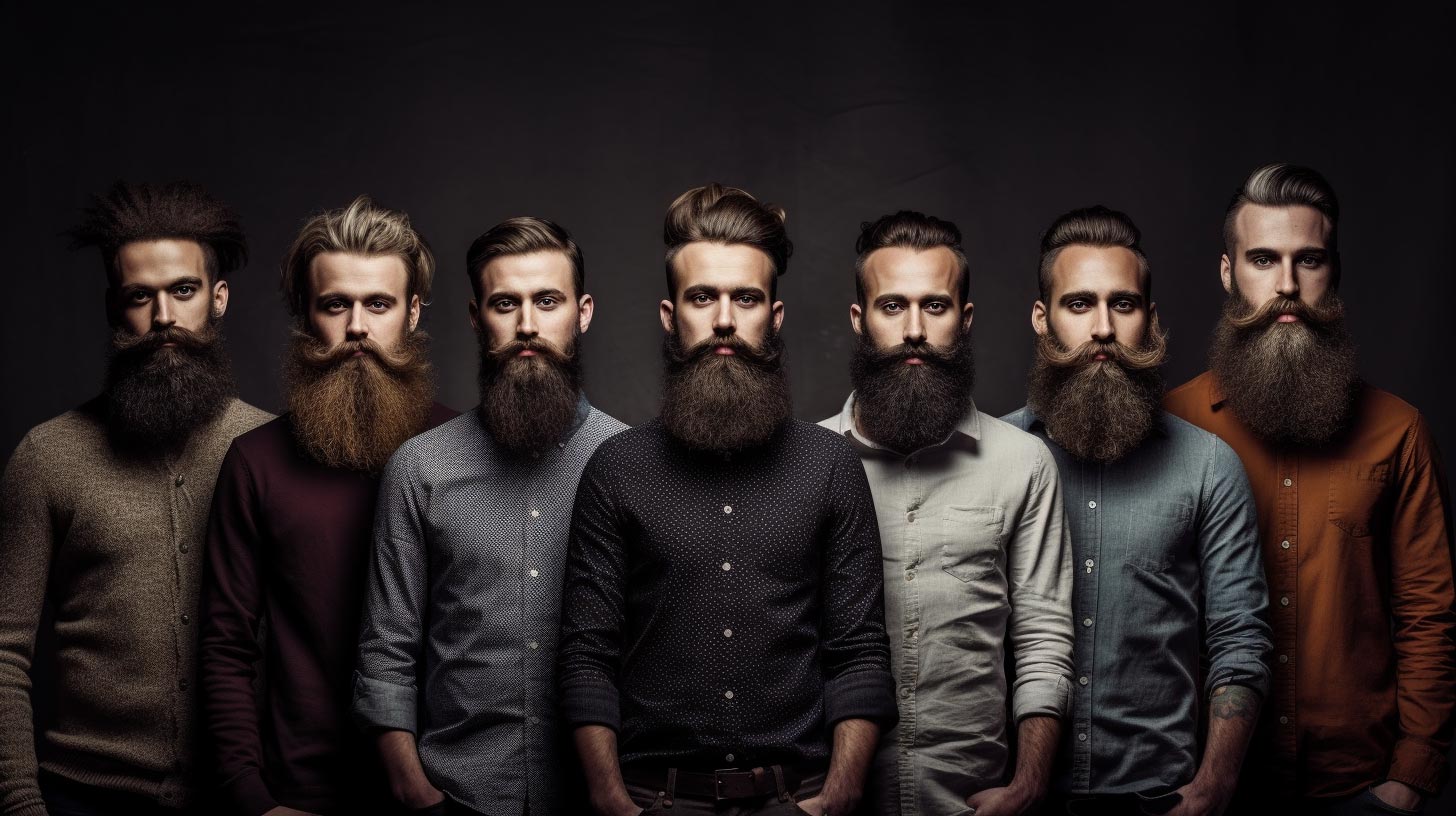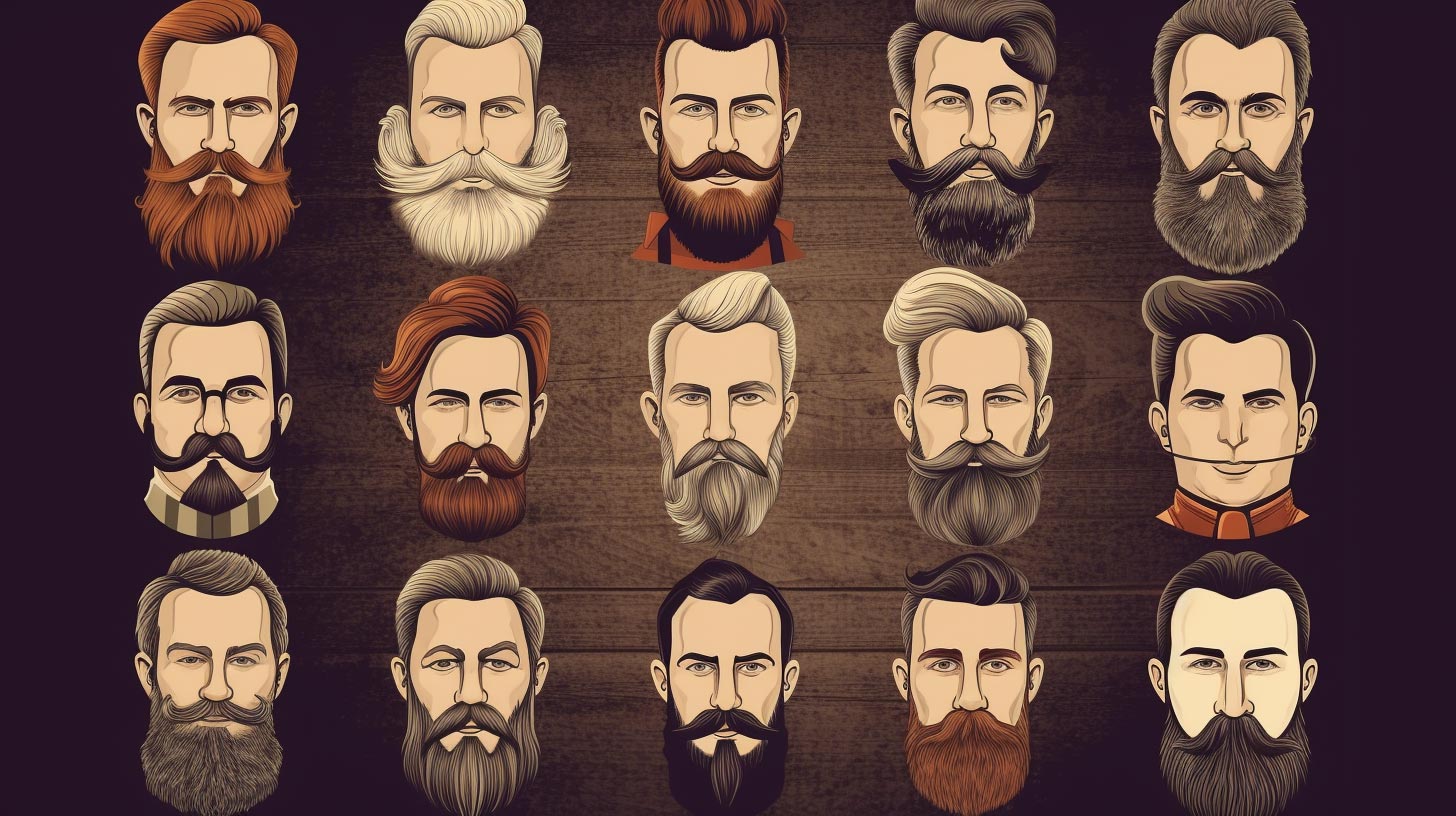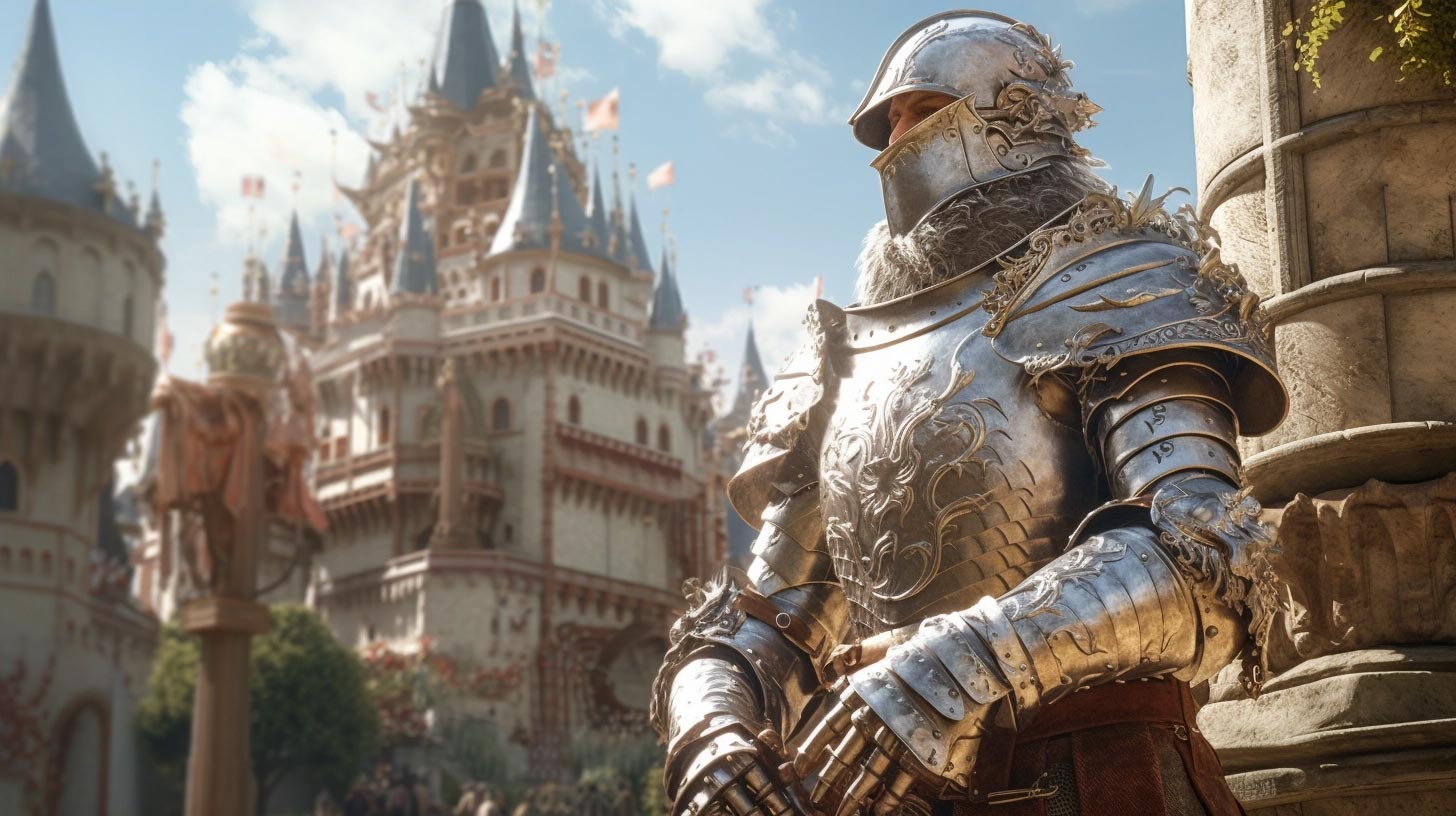Ah, the moustache!
That timeless symbol of masculinity and sophistication has graced the faces of men throughout history. From the luxurious handlebars twirled by dapper Victorian gents to the bold statement made by Tom Selleck’s enviable Magnum P.I. stache, this facial hair adornment continues to hold a cherished place in our hearts and on our upper lips.
So, sit back, and grab a cup of tea (or whiskey if you prefer), as we whisk you away on a meticulously groomed journey through the fascinating world of moustaches.
You’re about to embark on an adventure through time, exploring various eras where different styles held sway in shaping societal norms and personal identities.
We’ll delve into the significance behind some of your favourite moustache styles, help you choose the perfect one for your own face shape, and even share some tips for growing and maintaining your very own magnificent masterpiece.
With each twist and turn of history’s pages, you’ll discover how these small yet powerful patches of hair have left their mark on culture and even influenced some iconic figures along the way—all with a dash of humour because, after all, life is too short not to chuckle at ourselves now and then!
Contents
- 1 Key Takeaways
- 2 The History of Facial Hair Trends
- 3 Popular Moustache Styles and Their Significance
- 4 How to Choose the Right Style for Your Face Shape
- 5 Tips for Growing and Maintaining a Moustache
- 6 Cultural Impact and Iconic Moustache Wearers
- 7 Frequently Asked Questions
- 7.1 Do moustaches have any health benefits or downsides?
- 7.2 Can women grow moustaches and what are the societal perceptions around it?
- 7.3 How have moustache styles varied across different cultures and time periods?
- 7.4 What are the most common challenges faced by people growing a moustache for the first time?
- 7.5 Are there any famous fictional characters known for their moustaches, and how have they influenced moustache trends?
Key Takeaways
- Moustaches have been a symbol of masculinity and sophistication throughout history, and different civilizations have used facial hair to symbolize their culture and beliefs.
- There are numerous popular moustache styles, each with unique cultural and historical significance, including the Handlebar, Chevron, Horseshoe, English, and Toothbrush.
- When choosing the right moustache, it’s important to consider the shape of your face – oblong faces with strong jawlines are well-suited for the classic handlebar or horseshoe moustaches, while round or square visages are well-suited for styles like the chevron or pencil.
- Regularly washing with a gentle beard shampoo and using quality grooming tools like a small comb, scissors, and wax are essential for proper moustache maintenance.
The History of Facial Hair Trends
It’s fascinating how the preference for facial fuzz has waxed and waned over time, with whiskers often being a sign of style, power or rebellion. Throughout history, various civilizations have sported some form of facial hair as a symbol of their culture and beliefs.
Ancient Egyptians adorned their chins with ornate false beards called “postiches” to signify royalty, while Greek warriors grew thick beards as a display of masculinity and strength. The Romans, however, preferred a clean-shaven look to differentiate themselves from the barbarians they encountered during their conquests.
Fast forward to the 19th century when moustaches reached peak popularity in Europe and North America – ah yes, those were the hairy days! With each passing decade, moustache trends evolved from bushy Victorian whiskers to dapper handlebars; signalling a social status or even political allegiance. As you can see, facial hair has played an essential role in defining identity throughout human history. Now that you’ve got a grasp on the storied past of these follicular fashion statements, let’s dive into popular moustache styles and their significance in shaping our modern world!
Popular Moustache Styles and Their Significance
There’re numerous popular moustache styles, each bearing its unique cultural and historical significance. Take the Handlebar, for example, a symbol of manly sophistication that harkens back to the 19th century when well-groomed gents would sport this style with pride.
The iconic Salvador Dalí wore his pencil-thin version with an upward curl, while Wild West lawmen like Wyatt Earp rocked a bushier take on the trend. Then there’s the Chevron, worn by legends such as Tom Selleck and Freddie Mercury. This full-bodied ‘stache exudes confidence and has become synonymous with both machismo and musical prowess.
The Horseshoe is another classic, often associated with bikers and wrestlers but also donned by none other than Hulk Hogan himself – brother! For those seeking a more refined look, consider the English moustache – thin and straight across like a fine gentleman’s monocle chain. And let us not forget Charlie Chaplin’s Toothbrush style, it’s now rarely seen outside of costume parties or historical reenactments.
These are just a few examples showcasing how facial hair can be both an expression of personal identity as well as reflecting broader societal trends throughout history. So if you’re inspired to try your hand at sporting some upper lip decor, remember that choosing the right style for your face shape will make all the difference in pulling off that dashing new look successfully!
How to Choose the Right Style for Your Face Shape
Selecting the perfect ‘stache to complement your facial features can be akin to finding that elusive missing puzzle piece – once it clicks, you’ll wonder how you ever lived without it. But fear not, my follicular-curious friend, as uncovering the ideal moustache style for your face shape is a journey through history and human ingenuity. Over millennia, whisker wizards have devised a plethora of styles to accentuate various facial structures, making your quest for the ultimate upper lip accessory an exciting exercise in self-expression.
First things first: determine your face shape by examining its length and width proportions. Oblong faces with strong jawlines are well-suited for the classic handlebar or horseshoe moustaches, which will balance out those chiselled features like a perfectly twirled walrus on a unicycle. If you’re blessed with a round or square visage, fear not – opt for styles like the chevron or pencil that elongate and add sophistication to your countenance (think Tom Selleck meets Salvador Dalí). For those graced with oval-shaped faces, congratulations! You’ve hit the genetic jackpot and can experiment freely with any style from the refined Dali to the robust Fu Manchu. Ultimately though, remember that rules were made to be broken: feel free to mix and match styles or create something wholly new in your pursuit of moustachioed glory. After all, what’s life without taking some hairy risks? Now that you’re armed with this knowledge of follicular finesse let’s move on to tips for growing and maintaining that masterpiece atop your lip.
Tips for Growing and Maintaining a Moustache
Patience, persistence, and proper grooming practices pave the path to a powerful and pristine ‘stache that’s sure to turn heads. The journey towards an impressive moustache begins by allowing your facial hair to grow uninhibited for at least four to six weeks. During this time, channel your inner 19th-century gentleman and resist the urge to trim or style your budding whiskers. Instead, acquaint yourself with the fine art of moustache maintenance by investing in quality grooming tools such as a small comb, scissors, and wax – all essential items wielded by our hirsute forefathers in their quest for upper lip glory.
As you cultivate your nascent ‘stache, it’s crucial to adopt regular care routines befitting its noble lineage. First and foremost, keep it clean – even Salvador Dalí would have baulked at the thought of crumbs lingering in his iconic moustache! Regularly washing (but not over-washing) with a gentle beard shampoo will prevent unsightly build-up while maintaining essential oils. When it comes to trimming and shaping your masterpiece-in-progress, patience is indeed a virtue; exercise caution when wielding scissors so as not to inadvertently undo weeks of growth.
And finally, do not underestimate the power of a dash of moustache wax for taming unruly hairs or achieving that perfect curl à la Hercule Poirot. By heeding these tried-and-true techniques passed down through generations of distinguished moustachioed men before you, your splendid crumb-catcher will soon be ready for public admiration – perhaps even earning you a place among history’s most celebrated whisker wearers like Charlie Chaplin or Friedrich Nietzsche! Now that we’ve covered how best to nurture and maintain your new facial accessory let us delve into understanding its cultural impact and examining some iconic examples throughout history.
Cultural Impact and Iconic Moustache Wearers
You’ll find that throughout history, the moustache has played a significant role in shaping perceptions of masculinity, power, and style – gracing the faces of some of the world’s most iconic figures. In ancient Egypt, facial hair was seen as a sign of wealth and status – with pharaohs like Ramses II sporting well-groomed ‘staches to assert their authority. Fast forward to 19th-century Europe, where military men like Otto von Bismarck and Friedrich Wilhelm sported bushy handlebars to intimidate their enemies on the battlefield. Even in more recent times, famous personalities such as Charlie Chaplin and Salvador Dalí have used their whiskers to create unforgettable characters or express their artistic flair.
But moustaches aren’t just for show; they’ve also been at the forefront of social change. Take American civil rights activist Martin Luther King Jr., whose neatly trimmed facial fuzz became a symbol of his fight for equality during the turbulent 1960s. And let’s not forget about Freddie Mercury – frontman of Queen and all-around rock legend – who rocked his trademark chevron ‘stache while belting out anthems that still inspire millions today. Or how about Tom Selleck’s luxurious lip sweater that helped redefine TV detectives in the ’80s series Magnum P.I.? The point is clear: from politics to pop culture, moustaches have made an indelible mark on our world – one whisker at a time! So go ahead and embrace your inner Mo Bro (or Sista) because you’re in good company!
Frequently Asked Questions
Do moustaches have any health benefits or downsides?
Sporting some fabulous upper lip foliage may not only tickle your fancy, it can also protect you from harmful UV rays. However, beware of stache-tastrophe: excessive hair harbors bacteria leading to skin irritation.
Can women grow moustaches and what are the societal perceptions around it?
Yes, women can grow moustaches, though typically less prominent. Historically, some cultures embraced it, while others deemed it unfeminine. Today’s society often frowns upon female facial fuzz, but remember: you do you!
How have moustache styles varied across different cultures and time periods?
You’ve seen ‘stache styles change over time, from ancient Egyptians’ thin strips to Victorian gentlemen’s handlebars. Even Chinese emperors sported impressive whiskers! So, embrace the hairy history and let your lip fur fly.
What are the most common challenges faced by people growing a moustache for the first time?
Ah, the hairy journey begins! As a first-time moustache grower, you’ll face uneven growth, potential itchiness, awkward in-between stages, and figuring out how to style and maintain your new facial accessory.
Are there any famous fictional characters known for their moustaches, and how have they influenced moustache trends?
You’d recognize Hercule Poirot’s iconic curled moustache, which sparked a trend in the early 20th century. Likewise, Tom Selleck’s Magnum P.I. ‘stache influenced the popularity of bushy upper lip hair in the 80s.




